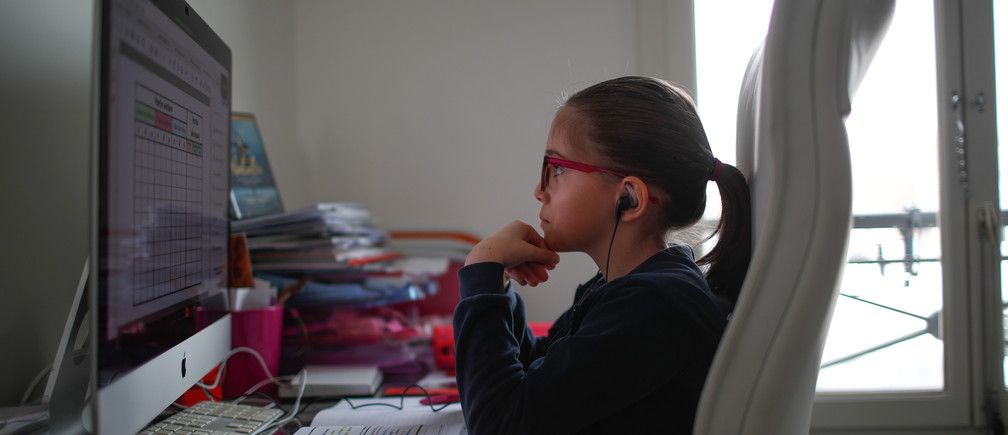The coronavirus has had an impact on all of our lives, and the term “new normal” is something we are now all familiar with. One of the areas which seriously changed during the pandemic has been education and how our children conduct their learning. Almost all schools around the world closed their doors with lessons being conducted online via Microsoft Teams, Zoom or other online applications. While this is an excellent alternative in times of crisis, is it a genuine substitute for face to face teaching?
At Harrow International School in Hong Kong, they are happy to embrace modern technology and the innovations which were used by educators during the outbreak, but also emphasise the importance of classroom learning. Most accept that for the foreseeable future at least, teaching will change and technology will play a greater part in all of our lives. Still, physical interactions should not be replaced entirely, and the educationally disadvantage should not suffer as a consequence.
Closing of schools
According to the Organisation of Economic Co-operation and Development (OECD), around one billion children’s education was affected by Covid-19 with schools in over 100 countries being forced to closed. For the fortunate, parents were able to assume the role of teacher and host homeschooling with living rooms becoming both classrooms and playgrounds as well as being a living space for the rest of the family. It was a significant change for all concerned with only an estimated 4% of children in the developed world being schooled at home before the pandemic.
Parents and technology
Many parents have relished to the opportunity of participating in their child’s education, but for most, there have been concerns about the long term implications. Do parents have the required skills to be teachers and do all families have access to the necessary digital technologies which have been used to deliver lessons? Indeed, in many parts of the world, including in developed nations, it is the access to technology which has caused the most concern, especially in larger families.
Apps from Microsoft and Google have now become integral parts of learning and Zoom, which was designed as a conferencing app, if now as important in the classroom as it is in the boardroom. In the UK, children and parents are participating in fitness classes put on by celebrities or leading sports instructors such as Joe Wicks and this has helped to break up days. In has brought the opportunity to have some fun as well as burn off excess energy.
In France, a program called “Ma classe a la maison” or my classroom at home has been created to assist with homeschooling. It is easy to use and can be accessed from computers, smartphones and tablets providing up to four weeks courses for the target age group. The program has been recognised by the OECD and been described as containing “confirmed pedagogical content”. Of course, this has reduced the pressure on parents, but is it really a long-term solution?
Is face to face teaching a thing of the past?
Technology has played a role in changing how people go about their lives with computers and software, now playing a role prominent role in education. It is something that should be embraced and encouraged, but it is unlikely to replace face to face teaching entirely, and this is a point that many schools and those involved in education are keen to point out.
Japan, one of the most technologically advanced nations in the world, has been leading the way with bringing more technology into education. Even the private sector is now offering free online courses which can be accessed via a government platform. Parents and pupils decide which courses they wish to follow.
The fact that they are free helps to avoid deepening any social or educational inequalities but does not replace the interaction which students have with their peers and teachers. Concerns have been raised regarding the psychological impact of schools being closed, especially on the most vulnerable. Academically their needs are being addressed, but there also need to be a means of ensuring that more basic human needs are not forgotten.
E-Learning is an opportunity
The coronavirus pandemic has had a devastating impact on many families and businesses around the world. Still, even Andreas Schleicher, Director of Education and Skills at the OECD thinks that it is a perfect opportunity to “rethink how we organise education”. What has been noticeable is that being able to bridge the digital divide is now essential, and the use of devices and software in schools should become a fundamental part of the learning process.
Mr Schleicher believes that it is the bricks and mortar of schools that should no longer be viewed as “knowledge delivery systems” and that teachers should now feel empowered to pursue how and what they teach their students. As well as increasing digital awareness, it may also bring back a personal element to teaching, something that some feel had been lost due to in the inflexibility of some teaching environments.
The importance of empowering teachers
For many years the consensus has been against giving teachers greater autonomy, feeling that they don’t have the necessary expertise to fulfil their role. However, with change forced upon them, schools and teachers have responded admirably and proved that a prescriptive approach to teaching is not always necessary. Students, teachers and schools are all learning and responding to the challenge, recognising that lessons may need to be taught via a new medium.
The use of technology is teaching gives teachers more power and can even help to elevate their role from “imparting received knowledge towards working as co-creators of knowledge,” according to Schleicher. Many teachers are happy to embrace the shift, believing that even prior to the pandemic, a shortage of technology hindered learning.
Before the outbreak, only around 60% of teachers globally had received training in the use of IT in the classroom, with 20% even believing that they needed urgent training in the area. Now we have witnessed firsthand how education has the potential to evolve; it would seem inevitable that technology will play a more critical role in education, and that includes in the physical classroom. Covid-19 has changed us, but let’s ensure that when schools re-open, they have evolved and improved.






